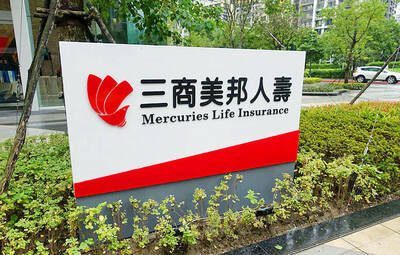Taiwan’s economy may contract in the third quarter, the first such contraction since 2003, as the fallout of the US financial crisis trims global demand for Taiwanese goods and domestic demand weakens, a Standard Chartered Bank report said last week.
“We see the possibility of a mild 0.4 percent year-on-year contraction in real GDP for the third quarter, the first annual decline since the second quarter of 2003,” Tony Phoo (符銘財), chief economist of Standard Chartered Bank (Taiwan), wrote in the report Taiwan — Re-assessing the 2008-09 Growth Outlook, which was released on Thursday.
Phoo said the quarterly contraction in GDP growth was attributable to “a significant drop in the trade surplus and declines in industrial output and retail sales” in the July-August period.
The economy declined 0.12 percent in the second quarter of 2003 because of the SARS outbreak. In November 2005, however, the government revised the figure to 0.11 percent growth, after the Directorate General of Budget, Accounting and Statistics (DGBAS) adopted a new calculation system, 93SNA (System of National Accounts), which was introduced by the UN in 1993.
Taiwan, like the other export-oriented economies in the region, depends on a prosperous world market for information technology products and other items that support its economy.
But after exports fell by 1.6 percent year-on-year last month and given the fast deteriorating global economic conditions in the short term, Standard Chartered revised its GDP growth forecast for Taiwan to 2.8 percent this year and 3.1 percent next year, from its previous estimates of 3.5 percent and 4.8 percent respectively, the report said.
“In a nutshell, we expect Taiwan to register sub-par growth performance over the next few quarters due to sharply slowing external demand alongside dimming prospects for the domestic sector, in particular employment and corporate investment,” Phoo wrote.
The DGBAS forecast on Aug. 22 that the economy would grow 3.04 percent year-on-year in the third quarter, 4.3 percent this year and 5.08 percent next year. The agency is scheduled to update its forecasts late next month.
The latest prediction by Standard Chartered followed a slew of downward forecasts by Deutsche Securities, Morgan Stanley and the IMF. It also came after Singapore’s latest economic data showed on Friday that its GDP fell 0.5 percent year-on-year in the third quarter, following a revised 2.3 percent growth in the previous quarter.
In a report released last week by Deutsche Securities’ Taipei-based economists, led by Julian Wang (王俊朗), the German brokerage predicted Taiwan’s GDP growth would drop to 3.4 percent this year and 1 percent next year, from the 4.3 percent and 3.3 percent respectively it forecast in June.
Deutsche Securities’ projection of 1 percent growth for next year, if it materializes, would be a new low after Taiwan recorded a GDP contraction of 2.17 percent in 2001 and 1.38 percent in 1974 because of the oil crisis that year.
In comparison, Morgan Stanley cut its growth forecast for Taiwan to 3.4 percent next year from the 4.8 percent it predicted in March, while the IMF lowered its forecast for next year to 2.5 percent from its April estimate of 4.1 percent.
To prop up falling equity prices that have depressed consumer confidence and domestic spending, the government recently introduced new plans to cushion the impact of the global financial crisis. But Phoo said policymakers in Taiwan have few alternatives to address the slowdown problem effectively.
The TAIEX has declined 39.69 percent since the beginning of the year, falling to 5,130.71 points on Thursday, its lowest close since it finished at 5,095.31 on July 3, 2003.
The TAIEX has fallen 43.43 percent since President Ma Ying-jeou’s (馬英九) administration took office on May 20, Taiwan Stock Exchange’s data showed.

Mercuries Life Insurance Co (三商美邦人壽) shares surged to a seven-month high this week after local media reported that E.Sun Financial Holding Co (玉山金控) had outbid CTBC Financial Holding Co (中信金控) in the financially strained insurer’s ongoing sale process. Shares of the mid-sized life insurer climbed 5.8 percent this week to NT$6.72, extending a nearly 18 percent rally over the past month, as investors bet on the likelihood of an impending takeover. The final round of bidding closed on Thursday, marking a critical step in the 32-year-old insurer’s search for a buyer after years of struggling to meet capital adequacy requirements. Local media reports

US sports leagues rushed to get in on the multi-billion US dollar bonanza of legalized betting, but the arrest of an National Basketball Association (NBA) coach and player in two sprawling US federal investigations show the potential cost of partnering with the gambling industry. Portland Trail Blazers coach Chauncey Billups, a former Detroit Pistons star and an NBA Hall of Famer, was arrested for his alleged role in rigged illegal poker games that prosecutors say were tied to Mafia crime families. Miami Heat guard Terry Rozier was charged with manipulating his play for the benefit of bettors and former NBA player and

TECHNOLOGICAL RIVALRY: The artificial intelligence chip competition among multiple players would likely intensify over the next two years, a Quanta official said Quanta Computer Inc (廣達), which makes servers and laptops on a contract basis, yesterday said its shipments of artificial intelligence (AI) servers powered by Nvidia Corp’s GB300 chips have increased steadily since last month, should surpass those of the GB200 models this quarter. The production of GB300 servers has gone much more smoothly than that of the GB200, with shipments projected to increase sharply next month, Quanta executive vice president Mike Yang (楊麒令) said on the sidelines of a technology forum in Taipei. While orders for GB200 servers gradually decrease, the production transition between the two server models has been

BETTER THAN EXPECTED: The firm’s Q3 results exceeded its projections, based on ‘the underlying strength of our core markets,’ chief financial officer Dave Zinsner said Intel Corp returned to profitability and gave an upbeat revenue forecast after PC demand grew, suggesting that it is making progress on a long and challenging comeback attempt. In the third quarter, revenue rose 3 percent to US$13.7 billion. The Santa Clara, California-based company posted its first quarterly net income since the end of 2023, with earnings per share of US$0.23, excluding some items. Analysts had estimated sales of US$13.2 billion and earnings per share of US$0.01 on average, according to data compiled by Bloomberg. Fourth-quarter sales would be roughly US$13.3 billion, the company said in a statement on Thursday. Intel shares gained about